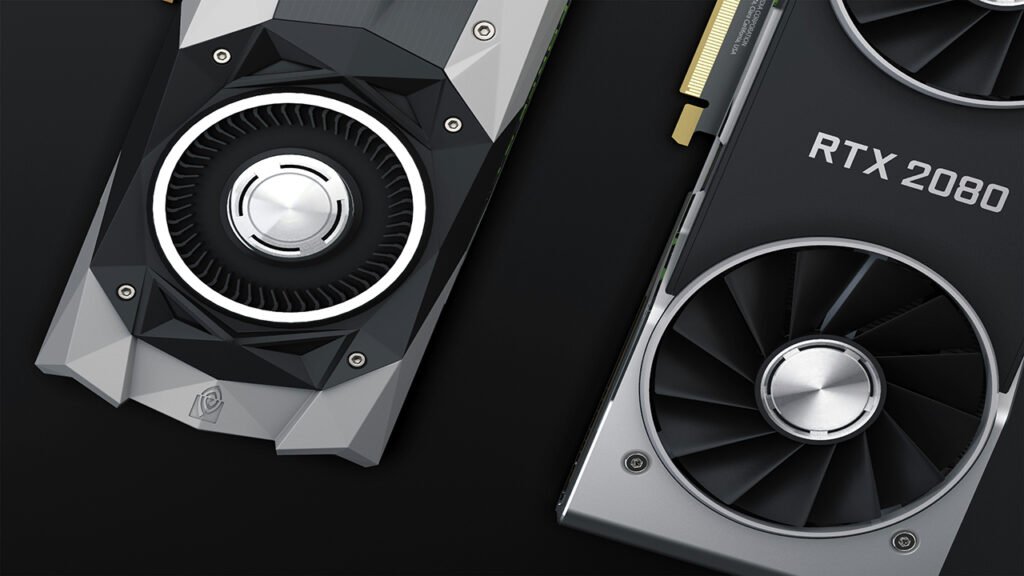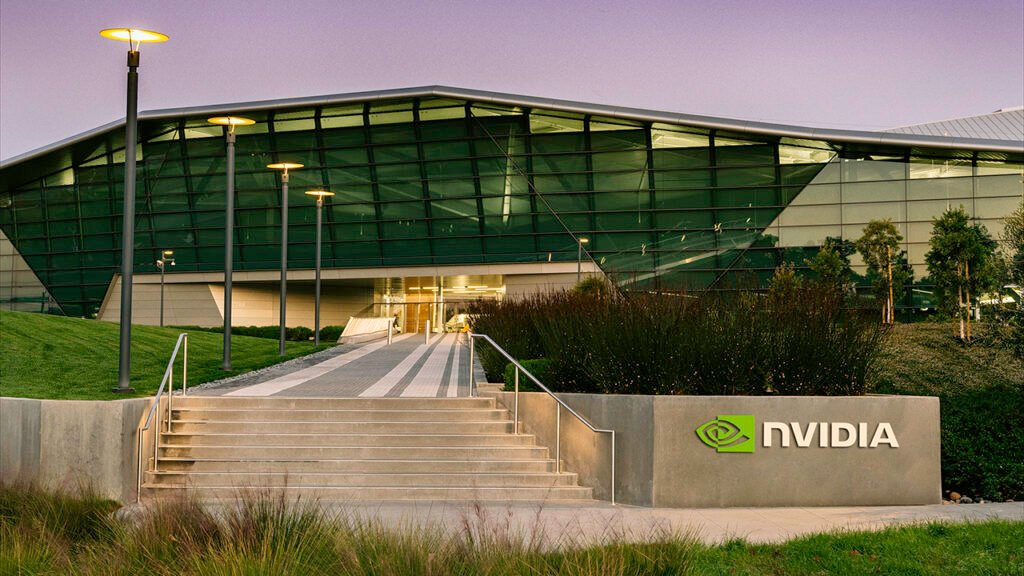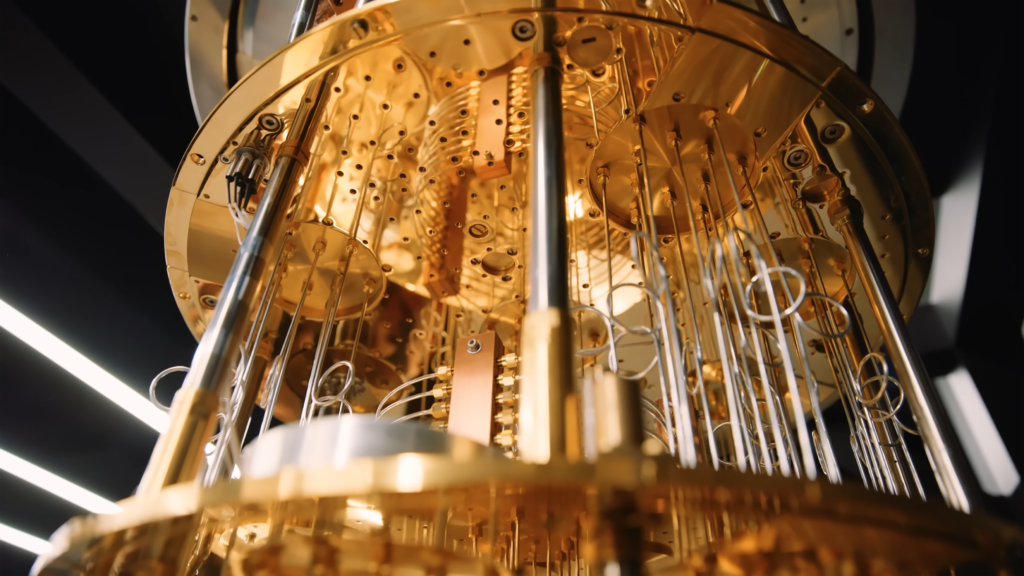What is a Graphics Card?
A graphics card, also known as a video card, display card, or graphics adapter, is a computer expansion card that generates a feed of graphics output to a display device such as a monitor. It is an essential component in a computer system, especially for tasks that require high graphical processing power such as gaming, video editing, 3D modeling, and scientific simulations.
The Purpose of GPU Creation
The Graphics Processing Unit (GPU) was initially designed to accelerate the rendering of 3D graphics. This was a task that demanded large amounts of floating-point arithmetic for vertex and fragment shading computations and high memory bandwidth. The primary purpose of a GPU was to render 3D graphics, which are comprised of polygons. Since most polygonal transformations involve decimal numbers, GPUs were designed to perform floating-point operations (as opposed to integer calculations), enabling GPUs to render graphics more efficiently than even the fastest CPUs.
GPUs were originally created for computer gaming and rendering high-resolution graphics in real-time. They were designed to rapidly manipulate and alter memory to accelerate the creation and rendering of images, videos, and graphics. The rise of GPUs had a profound impact on the gaming industry. Game developers could now create more advanced and immersive games, and players could enjoy these games with stunning graphics and real-time animations.
Over time, GPUs became more flexible and programmable, enhancing their capabilities. This allowed graphics programmers to create more interesting visual effects and realistic scenes with advanced lighting and shadowing techniques. After their initial design, GPUs were found to be useful for non-graphic calculations involving embarrassingly parallel problems due to their parallel structure6. Other non-graphical uses include the training of neural networks and cryptocurrency mining.
The innovative creation of GPUs, and all of the parallel technological advancements that have come along with them, has generated a new age that has allowed technology to become the pervasive entity that we can no longer live without. Today, GPUs power the fastest supercomputers, are the dominant platform for deep learning, and provide the intelligence for devices ranging from self-driving cars to robots and smart cameras. They also generate compelling photorealistic images at real-time frame rates.
What Does a GPU Do?
A Graphics Processing Unit (GPU) is a specialized electronic circuit designed to rapidly manipulate and alter memory to accelerate the creation of images in a frame buffer intended for output to a display. It’s the part of the PC responsible for the on-screen images you see.
Key Functions of a GPU
Rendering Graphics: The primary function of a GPU is to render graphics for display on a screen. This includes both 2D graphics, such as those used in desktop applications, and more complex 3D graphics, like those found in computer games.
Parallel Processing: GPUs are designed for parallel processing, where multiple processors handle separate parts of a single task. This makes them particularly effective for graphics rendering, which involves performing similar operations simultaneously on a large number of pixels.
Relieving the CPU: By handling graphics rendering, the GPU frees up the CPU to perform other tasks. This can lead to a smoother and more responsive experience, particularly when running graphics-intensive applications.
Video Decoding/Encoding: GPUs are also used for decoding and encoding video. This involves converting video data into a format that can be displayed on screen (decoding) and converting raw video data into a compressed format (encoding).
Other Applications of GPUs
While GPUs were initially designed for graphics rendering, they have found use in a variety of other applications due to their parallel processing capabilities:
Scientific Computing: GPUs can perform a large number of calculations simultaneously, making them useful for scientific computing applications that involve large amounts of data.
Machine Learning: In machine learning, GPUs can be used to train models more quickly by processing large amounts of data in parallel.
Cryptocurrency Mining: Some cryptocurrencies require miners to perform a large number of calculations to mine new coins. GPUs are well-suited to this task due to their ability to perform many calculations simultaneously.
In conclusion, a GPU is a critical component in a computer system, especially for tasks that require high graphical processing power. It not only enhances the visual experience but also contributes to various other computational tasks.
The History of Graphics Cards
Early Beginnings
The history of graphics cards dates back to the 1960s when computer systems started using specialized hardware for graphics processing. The first computer graphic to be used on a computer was in the 1940s, when the Whirlwind I was developed for the U.S. Navy at the Massachusetts Institute of Technology.
In the 1980s, IBM was the first company to develop the graphics card. The monochrome display adapter (MDA) and the color graphics adapter (CGA) were plug-in devices that attached to the CRT.
The Advent of 3D Graphics
The history of modern GPUs starts in 1995 with the introduction of the first 3D add-in cards, and later the adoption of the 32-bit operating systems and affordable personal computers. The graphics industry that existed before the PC was largely dominated by more prosaic 2D architecture. 3dfx Interactive was one of the first companies to develop a consumer-facing GPU with 3D acceleration (with the Voodoo series) and the first to develop a graphical chipset dedicated to 3D, but without 2D support (which therefore required the presence of a 2D card to work).
The First GPU
NVIDIA released the GeForce 256 GPU (graphics processing unit) on October 11, 1999. It was considered the first GPU worldwide and fully supported DirectX 7. It also featured 32 MB of DDR (double data rate) memory. NVIDIA’s GeForce 256 was a dedicated processor for real-time graphics, an application that demands large amounts of floating-point arithmetic for vertex and fragment shading computations and high memory bandwidth.
Evolution and Modern GPUs
As real-time graphics advanced, GPUs became programmable. The combination of programmability and floating-point performance made GPUs attractive for running scientific applications. Scientists found ways to use early programmable GPUs by casting their calculations as vertex and fragment shaders. GPUs evolved to meet the needs of scientific users by adding hardware for simpler programming, double-precision floating-point arithmetic, and resilience.
Today, GPUs have become one of the largest, most complex, and most expensive components found in almost any computing device. They are now transforming the entire industry, powering today’s fastest supercomputers, being the dominant platform for deep learning, and providing the intelligence for devices ranging from self-driving cars to robots and smart cameras.
The History of Graphics Cards Conclusion
The evolution of graphics cards has been a journey of innovation and advancement, from simple 2D graphics to complex 3D rendering and beyond. Today, they are an integral part of our digital lives, powering everything from video games to scientific simulations. As technology continues to advance, we can only expect graphics cards to become even more powerful and versatile.
How Does a Graphics Card Work?
A graphics card works by carrying out the specialized workloads required for generating rendered images for display. This includes videos, 3D graphics, and even your operating system’s desktop, all of which gets processed inside the graphics card and then sent to your computer’s display.
The graphics card accomplishes this task using four main components:
- A motherboard connection for data and power
- A graphics processor (GPU) to decide what to do with each pixel on the screen
- Video memory (VRAM) to hold information about each pixel and to temporarily store completed pictures
- A monitor connection so you can see the final result
Types of Graphics Cards
There are three main types of graphics cards:
Dedicated Graphics Cards: These are standalone cards that have their own memory and processing power. They are typically used in high-performance systems for gaming, video editing, and other graphics-intensive tasks.
Integrated Graphics Cards: These are built into the motherboard and share resources with the CPU. They are typically found in laptops and budget desktop PCs and are suitable for basic tasks but not for high-end gaming or graphics-intensive work.
Graphics Processing Units (GPUs): These are the heart of both dedicated and integrated graphics cards. They are the specialized processors that handle the complex calculations needed to render graphics.
Technical Aspects of Graphics Cards
GPU Architecture
A Graphics Processing Unit (GPU) is a massively parallel processor that can perform arithmetic and logic operations on a large number of data sets concurrently. This parallel processing capability allows GPUs to quickly perform tasks such as rendering high-resolution 3D graphics, image and video processing, and simulations involving complex calculations.
A GPU houses thousands of cores which perform graphical and geometric calculations, and perform object transformations such as translations, stress, shearing, to animate the object. The cores of most recent GPU architectures are not limited to FMA, but perform more complicated operations like tensor (tensor core) or ray tracing (ray tracing core) operations.
Components of a Graphics Card
A graphics card is composed of several key components:
Graphics Processor (GPU): This is the heart of the graphics card. It’s a specialized processor that handles the complex calculations needed to render graphics.
Video Memory (VRAM): This is a dedicated memory that holds information about each pixel and temporarily stores completed pictures. It’s separate from your main RAM memory.
Motherboard Connection: This allows the CPU and graphics card to coordinate their respective activities to generate the image you see on a screen.
Monitor Connection: This is where you connect your monitor to see the final result.
Cooling System: All chips are integrated circuits (ICs) and they generate heat when they’re working. Graphics cards have thousands of them packed into a small volume, which means they’ll get pretty toasty if the heat isn’t managed in some way. As a result, most graphics cards are hidden underneath some kind of cooling system.
Power Connectors: These provide the necessary power for the graphics card to function.
Bus Interface: This is the slot on the motherboard where the graphics card is inserted.
Working of a Graphics Card
When you’re playing a game or editing a video, your CPU sends data about that image or video to the GPU. The GPU then takes this data and begins the complex process of turning it into the visuals you see on your screen. The GPU does this by performing a series of steps:
Creating a Wire Frame: The graphics card first creates a wire frame out of straight lines for a 3-D image.
Rasterizing the Image: The graphics card then fills in the remaining pixels (rasterizes the image).
Adding Lighting, Texture, and Color: The graphics card also adds lighting, texture, and color.
For fast-paced games, the computer has to go through this process about 60 to 120 times per second. Without a graphics card to perform the necessary calculations, the workload would be too much for the computer to handle
Video Random Access Memory (VRAM)
What is VRAM?
Video Random Access Memory (VRAM) is a type of RAM that is specifically designed for the GPU. It acts as temporary storage for data related to graphics rendering. This allows your video card to make use of the data immediately, without the slow process of transferring it from other storage.
How Does VRAM Work?
VRAM works as a buffer between the computer’s processor and the display, often referred to as the frame buffer. When images need to be displayed on the screen, the processor first reads them as data from some form of main (non-video) RAM and then writes them to VRAM. From here, the same data is sent as digital signals to the display of the computer through a video port.
Types of VRAM
There are several types of VRAM, each with its unique features and advantages:
Synchronous Graphics RAM (SGRAM): One of the oldest forms of VRAM, typically found in lower-end graphics cards.
Window RAM (WRAM): A type of VRAM that offers high performance and was once used in high-end graphic cards.
Multibank DRAM (MDRAM): A type of VRAM that divides memory into multiple 32-kilobyte banks which can be accessed individually.
Rambus DRAM (RDRAM): A type of VRAM developed by Rambus Inc. It has a high-speed data bus but it’s more expensive.
Graphics Double Data Rate (GDDR) RAM: A modern type of VRAM. It comes in several versions (GDDR3, GDDR4, GDDR5, GDDR6, etc.), with GDDR6 being the latest and fastest. I always recommend the latest DDR version of VRAM for the fastest performance.
High Bandwidth Memory (HBM): A high-performance VRAM that uses less power and can be stacked to increase memory while taking up less space on the card.
Importance of VRAM in a GPU
VRAM significantly improves graphics performance by providing dedicated memory for the graphics card. It does this by allowing fast access to graphical data, resulting in reduced latency, smoother frame rates, and improved overall visual quality while gaming or performing graphics-intensive tasks. VRAM bandwidth is an important aspect of GPU performance as it determines the rate at which data can be transferred to and from the GPU’s memory.
Choosing VRAM When Buying a GPU
When buying a GPU, it’s important to consider the amount of VRAM. The right amount of VRAM depends on your specific needs such as the types of games you play, the resolution of your monitor, and the performance requirements of any graphics-intensive applications you use. Here are some general guidelines:
720P = 2GB of VRAM
1080P = 4GB-10GB of VRAM
1440P = 6-12GB of VRAM
4K = 8-16+GB VRAM
Remember, VRAM usage is quickly trending upward and newer games might be very VRAM-dependent. Therefore, it’s always a good idea to look at the recommended VRAM requirements for modern games that you’d like to play and consider buying a GPU with 50-100% more VRAM than that figure.
GPU Buying Guide
Understanding Your Needs
Before buying a GPU, it’s important to understand your specific needs. Are you a gamer looking for high frame rates in the latest games? Or are you a content creator who needs a powerful GPU for 3D rendering or video editing? Maybe you’re a casual user who just needs a GPU for everyday tasks and light gaming.
Key Factors to Consider
Performance: Check the card’s specifications and benchmarks to see how it performs in real-world scenarios.
Resolution: If you’re gaming at 1080p, a mid-range card should suffice. For 4K gaming, you’ll need a high-end card.
Refresh Rate: If your monitor has triple-digit refresh rates, you’ll need a powerful card and processor to reach its full potential.
Power and Space: Ensure your PC case has enough room for the card and that your power supply can handle its power draw.
Price: Graphics card prices can vary greatly. Make sure to compare prices from different retailers and consider the card’s performance per dollar.
Brand: The GPU market is dominated by three main players: NVIDIA, AMD, and Intel. Each brand has its strengths and weaknesses, so it’s important to research and choose the one that best fits your needs.
Best GPUs in 2024
As of 2024, some of the best graphics cards for different needs and budgets include34:
Best Overall: Nvidia RTX 4070 Super
Best Premium: Nvidia RTX 4090
Best Value: Radeon RX 7600
Best AMD: RX 7900 XTX
Best for 1440p: Nvidia GeForce RTX 3070
Best for 1080p: Nvidia RTX 3060 Ti
Remember, the best graphics card for you depends on your specific needs and budget.
GPU Buying Guide Conclusion
Buying a GPU can be a complex task due to the variety of options available. By understanding your needs and considering the key factors such as performance, resolution, refresh rate, power, space, price, and brand, you can make an informed decision and choose the best GPU for your needs.
GPUs are made for a wide range of consumers, each with different needs and requirements:
Gamers: GPUs are essential for running video games, especially those with high-resolution graphics and complex real-time animations.
Content Creators: People who work with video editing, 3D modeling, graphic design, and other visually intensive tasks benefit from the powerful rendering capabilities of GPUs.
Scientists and Researchers: GPUs are used in scientific computing and research fields where large amounts of data need to be processed simultaneously.
Artificial Intelligence and Machine Learning Practitioners: GPUs have become foundational for training machine learning models, thanks to their ability to process large amounts of data in parallel.
Cryptocurrency Miners: Certain cryptocurrencies require miners to perform a large number of calculations to mine new coins. GPUs are well-suited to this task due to their ability to perform many calculations simultaneously.
Everyday Users: Even casual computer users benefit from GPUs. They help render videos, load webpages, and even make your operating system’s interface smoother.
In conclusion, GPUs cater to a broad spectrum of consumers, from gamers and content creators to researchers and everyday users, enhancing their computing experience and enabling them to achieve their goals more efficiently.
Final Conclusion
A graphics card is a crucial component of a computer system, especially for tasks that require high graphical processing power. Understanding how a graphics card works, the different types available, and how to choose one can help you make an informed decision when building or upgrading a computer system. Whether you’re a gamer, a content creator, or just a regular user, there’s a graphics card out there that’s perfect for your needs.


